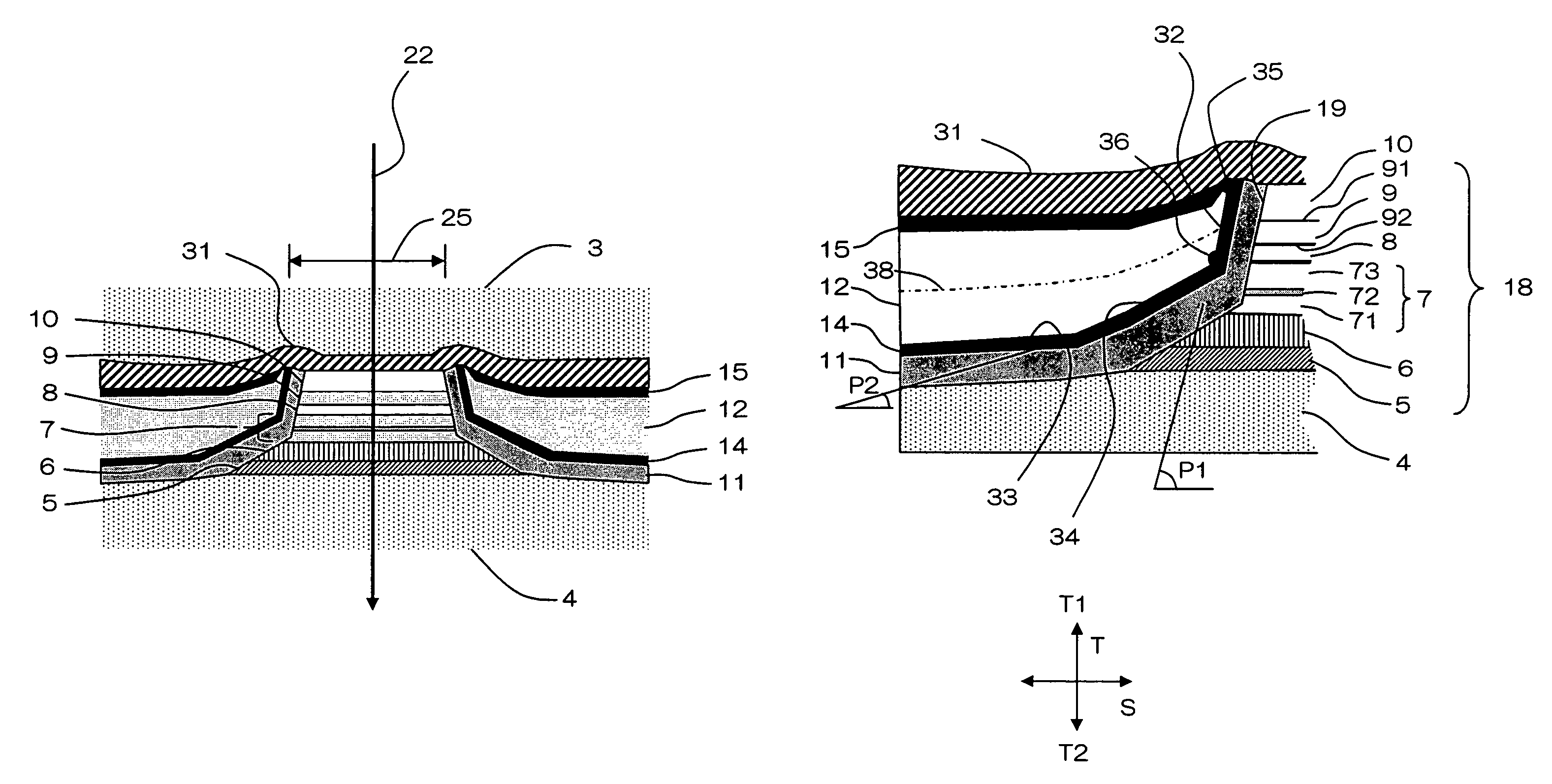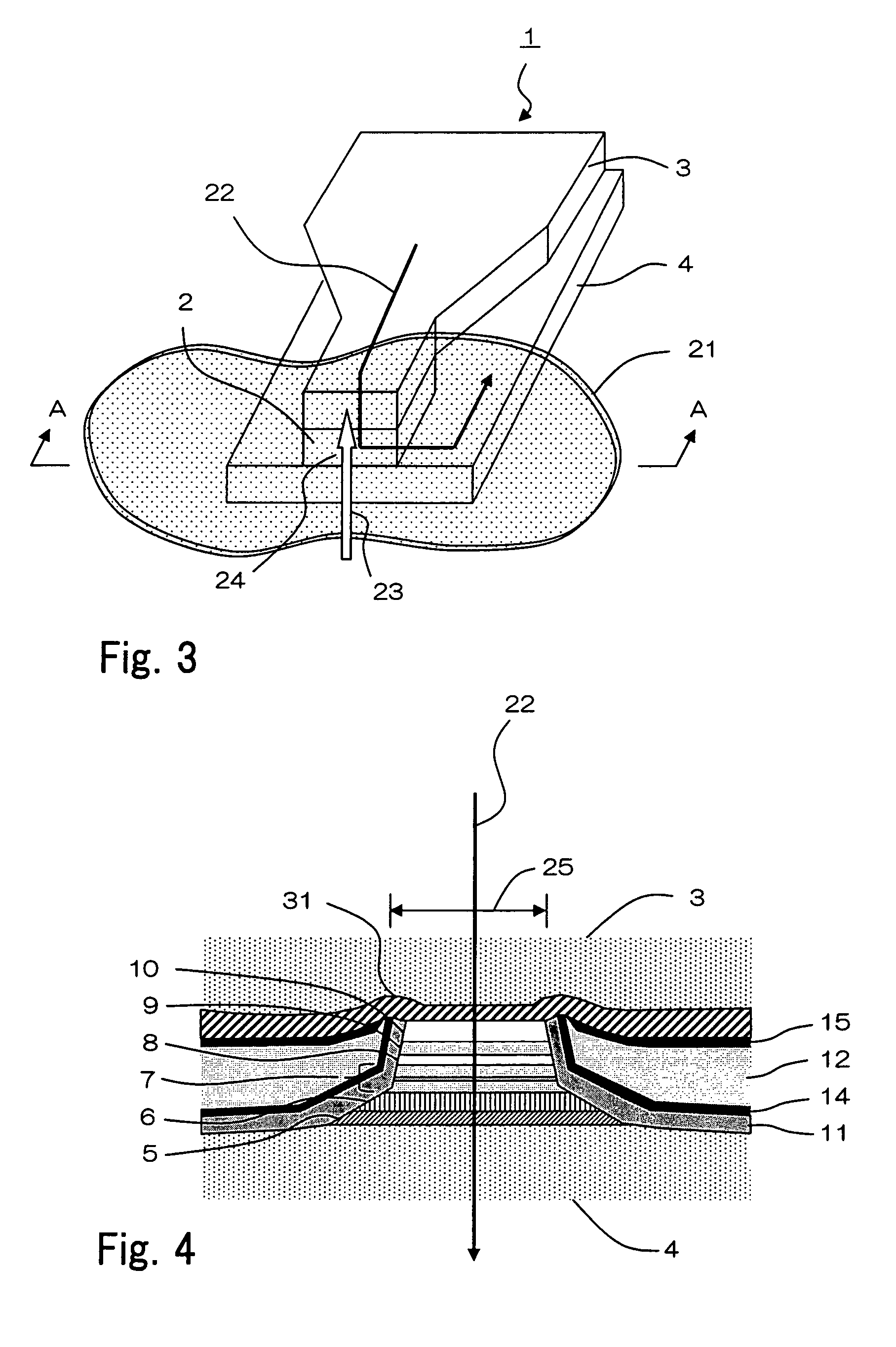Magnetoresistive effect element having hard magnetic films in non-uniform cross-sectional shape
a magnetic film, non-uniform cross-sectional technology, applied in the field of magnetic effect sensors, can solve the problems of insufficient change in magnetoresistance, difficult to form such a sv film configuration, change in magnetoresistance, etc., to achieve high ratio of change in magnetoresistance, increase the reproducible output level, and increase the film thickness
- Summary
- Abstract
- Description
- Claims
- Application Information
AI Technical Summary
Benefits of technology
Problems solved by technology
Method used
Image
Examples
Embodiment Construction
[0035]A magnetoresistive effect sensor, hereinafter referred to as CPP sensor 2, according to the present invention will be described with reference to the drawings.
[0036]FIG. 3 shows thin-film magnetic head 1 incorporating a magnetoresistive effect sensor according to the present invention in a perspective view. Thin-film magnetic head 1 may be a read-only head or an MR / inductive composite head which has a read head portion and a write head portion. CPP sensor 2 is sandwiched between upper electrode / shield layer 3 and lower electrode / shield layer 4, with an end portion facing recording medium 21. The end portion of CPP sensor 2 defines a part of air bearing surface 24. As indicated by the solid arrow in FIG. 3, sense current 22 flows from upper electrode / shield layer 3 through CPP sensor 2 to lower electrode / shield layer 4 under a voltage applied between upper electrode / shield layer 3 and lower electrode / shield layer 4. The signal magnetic field of recording medium 21 in a region o...
PUM
| Property | Measurement | Unit |
|---|---|---|
| thickness | aaaaa | aaaaa |
| width | aaaaa | aaaaa |
| thickness | aaaaa | aaaaa |
Abstract
Description
Claims
Application Information
 Login to View More
Login to View More - R&D
- Intellectual Property
- Life Sciences
- Materials
- Tech Scout
- Unparalleled Data Quality
- Higher Quality Content
- 60% Fewer Hallucinations
Browse by: Latest US Patents, China's latest patents, Technical Efficacy Thesaurus, Application Domain, Technology Topic, Popular Technical Reports.
© 2025 PatSnap. All rights reserved.Legal|Privacy policy|Modern Slavery Act Transparency Statement|Sitemap|About US| Contact US: help@patsnap.com



